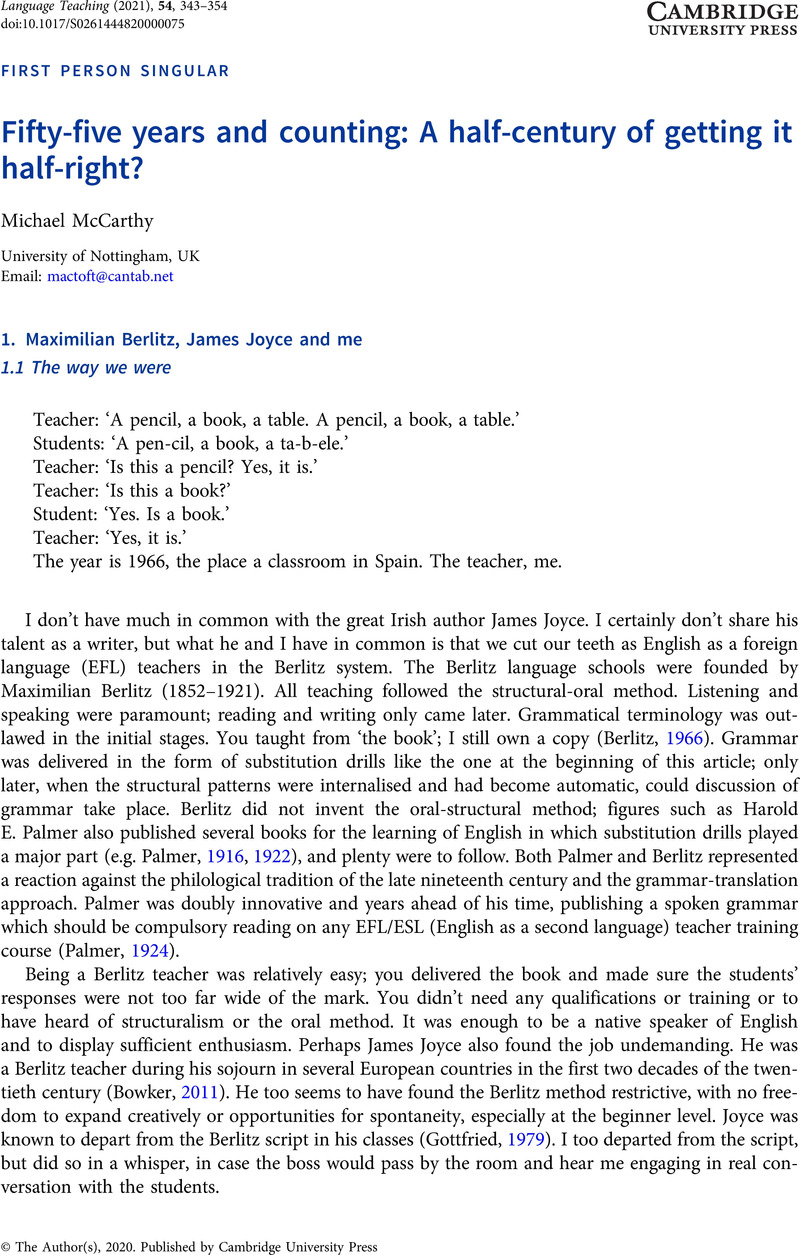Crossref Citations
This article has been cited by the following publications. This list is generated based on data provided by Crossref.
Kiczkowiak, Marek
2024.
Who gets to be an ELT course book author? Native speakerism in English for specific purposes and business English course books.
Frontiers in Education,
Vol. 9,
Issue. ,
Parkinson, Tom
and
Vyner, Luke
2025.
More Than Words.
Nation, Paul
2025.
The Encyclopedia of Applied Linguistics.
p.
1.
Kiczkowiak, Marek
2025.
Are most ELT course book writers white ‘native speakers’? A survey of 28 general English course books for adults.
Language Teaching Research,
Vol. 29,
Issue. 7,
p.
2909.



